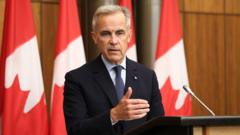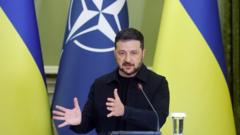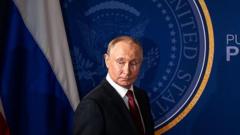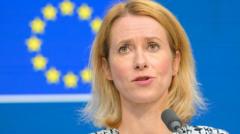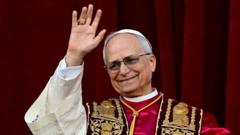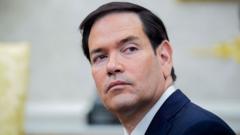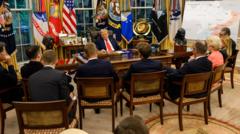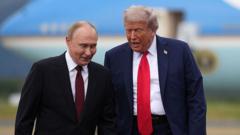Following two summits with Vladimir Putin and European leaders, President Trump's pursuit for peace in Ukraine remains fraught with difficulties. While he hints at potential US involvement, skepticism looms regarding both his and Putin's commitments, leaving Ukraine's future uncertain.
Trump’s Diplomatic Balancing Act: The Struggle for Peace in Ukraine
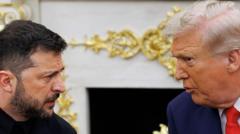
Trump’s Diplomatic Balancing Act: The Struggle for Peace in Ukraine
Despite two high-profile summits, Trump grapples with diplomatic setbacks in the ongoing quest for peace in Ukraine amidst mounting pressures.
In a world where diplomacy often feels like a staging ground for power plays, President Donald Trump’s recent summits with Russian President Vladimir Putin and European leaders signal a complex and challenging road ahead for peace in Ukraine. Last Friday, the two leaders convened in Alaska, an event celebrated for its grandeur yet lacking in substantial action towards resolution.
The diplomatic fervor continued as six European leaders converged in Washington, D.C., hoping to mitigate the implications of the Putin meeting. However, while the gathering marked a significant moment in international diplomacy, it produced scant tangible results. The pressure on Trump, who has campaigned on a platform promising to end foreign wars, is steadily mounting.
In Monday's discussions, Trump appeared more amenable to extending security guarantees for Ukraine, a move seen as essential by both Ukrainian and European officials. However, clarity remains elusive as Trump suggested that such a commitment might include "air support" rather than deploying ground troops, while placing a substantial share of responsibility on Europe.
The prospect of a bilateral summit between Putin and Ukrainian President Volodymyr Zelensky hangs in a shroud of uncertainty, as Trump’s remarks indicate a lack of consensus on the timing and specifics of such meetings. European leaders stress the necessity of a ceasefire prior to engaging in these negotiations—an outcome Trump deemed unlikely.
Despite these hurdles, the mere existence of dialogue between leaders represents a notable shift from previous engagements. Recent encounters have showcased a warmer, cooperative tone, contrasting sharply with tensions seen during Zelensky's earlier visit. Trump’s willingness to position himself as a peacemaker could play a key role in defining his legacy, as he expressed during a Tuesday interview: "If I can get to heaven, this will be one of the reasons."
Yet the conviction to achieve peace is fraught with challenges, particularly in discerning Putin's true intentions amidst ongoing Russian military operations. There exists a significant narrative that portrays Putin as more invested in a drawn-out conflict than a peaceful resolution, further clouding optimism.
Trump's previous inclination towards sanctions against Russia—now seemingly on indefinite pause—raises questions about his strategic priorities, as he openly believed that Putin was looking to broker a deal, regardless of the skepticism surrounding that notion.
While there may be grounds for cautious optimism, Trump himself remains a variable in this diplomatic equation. He has oscillated in his support for Zelensky, illustrating a precarious approach to foreign policy that is vulnerable to shifts in his administration or the sentiments of his political base.
Amidst these developments, Trump must contend with the anxieties of his supporters who prefer a focus on domestic issues over foreign commitments. This amplifies the risk associated with any promises of increasing US involvement in Ukraine, which could exacerbate sentiments among his electorate.
As the tumultuous discourse around the peace process continues, one fundamental truth emerges: Trump's team may desire to portray him as a peacemaker, but in the broader context of Ukraine, Europe, and Russia, America has the least to lose. The prospect of withdrawing from negotiations remains within reach, underscoring a unique power dynamic in the search for peace in the region.


